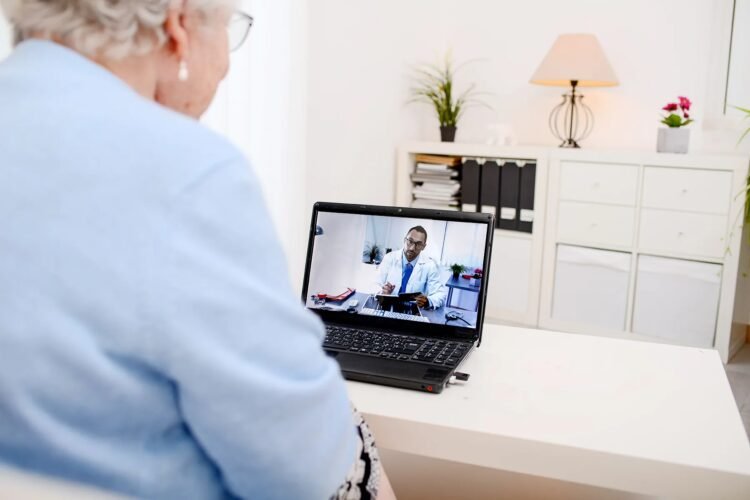Health Care for Older Adults in the COVID-19 Era
COVID-19 has transformed many aspects of daily life, particularly doctor visits. Since older adults are at higher risk for severe complications from the virus, minimizing unnecessary exposure is crucial. However, in-person visits and hospital stays are sometimes necessary. We consulted experts to understand what to expect and how to receive optimal care now that some restrictions have eased.
What to Expect
While COVID-19 guidelines have changed, healthcare facilities continue to maintain strict safety measures, says Marc Rabinowitz, MD, an internal medicine specialist in Bucks County, PA.
“The relaxed restrictions don’t apply to healthcare settings,” Rabinowitz explains. Safety protocols, such as mask-wearing and social distancing, remain in place in hospitals, nursing homes, and other medical environments.
At Your Doctor’s Office
Doctors’ offices continue to implement safety measures to protect patients and staff. Here’s what you might encounter:
- Masks may still be required.
- Doctors and staff might wear masks and gloves.
- Waiting rooms may have limited capacity.
- Visitor numbers could be restricted.
- Regular cleaning and sanitizing protocols are likely in place.
- The office may be arranged for social distancing.
At the Hospital
“Don’t avoid the hospital out of fear of being exposed to or contracting COVID-19,” Halpern advises. Hospitals have robust protocols in place to protect you from infection.
Many safety measures introduced early in the pandemic are still in effect, along with some additional precautions. Here’s what you can expect:
- Doctors and staff will wear personal protective equipment (PPE) like masks, face shields, and gloves.
- Mask-wearing may still be required.
- Visitor restrictions may apply.
- Proof of full COVID-19 vaccination may be needed.
- You may be tested for COVID-19.
- Temperature and symptom screenings may be conducted upon arrival.
Hospitals are as safe as ever, if not safer. Don’t hesitate to seek care if you need it.
Seek immediate help if you experience severe chest pain, shortness of breath, weakness on one side of your body, or difficulty speaking—these are signs of a heart attack or stroke and require urgent attention.
A Rise in Telemedicine
Many doctors now offer telemedicine, also known as telehealth, which allows you to consult with your physician remotely via phone, tablet, or computer using video platforms like Zoom, FaceTime, Skype, and WhatsApp.
Telemedicine is both safe and convenient, enabling you to connect with your doctor or get answers to your questions from the comfort of home. It also allows family members to participate in your care, even from a distance. Medicare and many commercial insurance plans cover telemedicine, though specific guidelines may vary depending on your state.
Telemedicine is ideal for routine check-ins, follow-ups, and consultations, where you can describe your symptoms or show them to your doctor. However, for certain issues—like monitoring blood pressure, listening to your lungs, or taking blood samples—an in-person visit may be necessary.
Your doctor will help you determine whether a telemedicine or office visit is best for your situation.
The Future of Telemedicine
Telehealth is expected to become a lasting part of healthcare.
“Even as COVID has eased, some of my more tech-savvy baby boomer patients still prefer telehealth,” says David J. Maleh, MD, an internal medicine specialist in Wilmington, DE. “I anticipate this trend will continue.”
While telemedicine likely won’t replace in-person visits entirely, it is becoming a regular component of care. Maleh notes that many of his patients come in for their annual physicals, then use telehealth for follow-up discussions. “It’s the direction we’re heading in as patients become more comfortable using telemedicine as a convenient option when an office visit isn’t necessary,” he explains.
New Trends in Long-Term Care
Long-term and skilled nursing facilities have seen significant changes beyond just safety protocols. The pandemic has left a lasting impact on their operations, making it more challenging to access care in many places.
Staff shortages have forced some facilities to close or operate at reduced capacity. Many healthcare workers left the field during the pandemic—some due to concerns about exposure to COVID-19, while others transitioned to private care roles where they can earn more, explains Dr. David J. Maleh.
As a result, more families are now choosing to care for their loved ones at home, often hiring in-home caregivers. The shift toward remote work has made this option more feasible for many.
“There’s certainly a benefit to being at home, as it reduces exposure to others who may be sick,” says Dr. Marc Rabinowitz. However, finding adequate help can still be difficult. “The shortage of healthcare personnel has created challenges in delivering optimal care for the elderly,” he adds.
How to Get the Best Care
These resources may assist you in finding the right care:
- Eldercare Locator: Offers local information on housing, support services, healthcare, and insurance.
- Family Caregiver Alliance: Provides guidance on caregiving, in-home care, nursing homes, and finances.
- BenefitsCheckUp.org: Helps you determine if you qualify for financial assistance with food and medications.
- Programs like FamilyWize, GoodRX, and NeedyMeds can offer discounts on prescription medications, helping to manage the rising costs of care during the pandemic.



